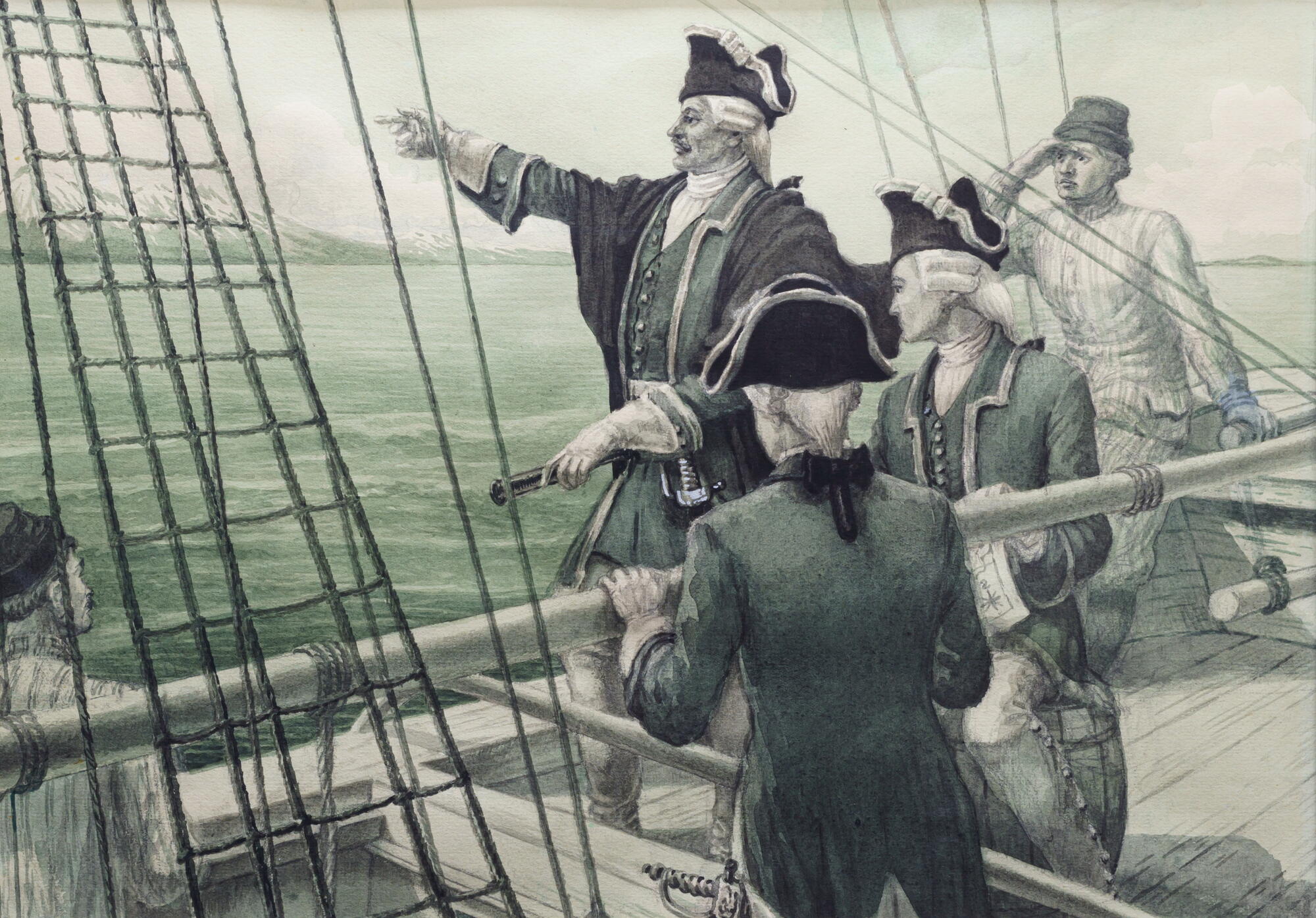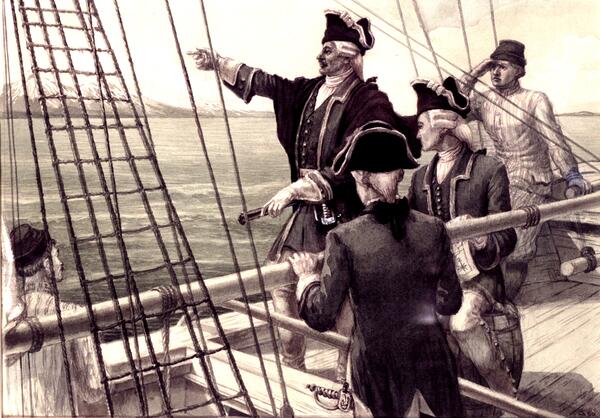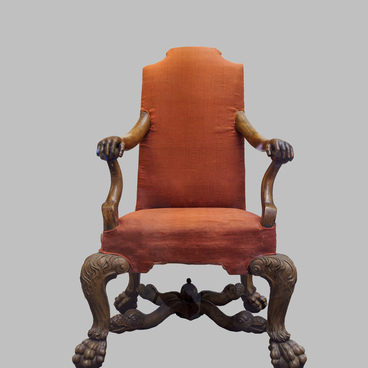Aleksey Ilyich Chirikov (1703–1748) was a Russian navigator and captain who explored the Pacific Ocean. He graduated from the Naval Guard Academy in Saint Petersburg in 1721, and the very next year started teaching navigation at the Academy. In 1725, by order of Peter the Great, Aleksey Chirikov was appointed second in command on the First Kamchatka Expedition of Vitus Jonassen Bering (1725–1730). The expedition reached the Bering Strait, discovering St. Lawrence, Ratmanov, and Diomede Islands, and describing the Chukchi Peninsula, the southern coast of the Kamchatka Peninsula, and the First Kuril Strait. For his service, Aleksey Chirikov was promoted to the rank of lieutenant commander in 1730.
During the Second Kamchatka Expedition (1733–1743), he once again served as Bering’s deputy although he eventually became head of his part of the exhibition after the “St. Peter” and “St. Paul” ships lost sight of each other in a thick fog. Chirikov sailed toward the northeast and on July 15, 1741, his ship came close to the coast of Alaska. When Russian sailors tried to land in order to study the coastal area, they had a clash with local Indians during which Chirikov lost two sloops and sixteen crew members. At the Aleutian Islands, he replenished the expedition’s supply of fresh water and started trading with the Aleutians. After a long and troublesome journey, the “St. Paul” crew was worn out and plagued by scurvy. In October 1741, Chirikov was forced to return to Petropavlovsk-Kamchatsky.
In his report to the Board of Admiralties on the results of the expedition in December 1741, Aleksey Chirikov provided the first description of the north-western coast of America. In the summer of 1742, he once again sailed to the coast of Alaska, providing more detail on Attu — the westernmost one of the Aleutian Islands. After reaching the island, the head of the expedition was forced to turn back due to extremely foggy and windy conditions. In 1746, Chirikov returned to Saint Petersburg where he summarized the results of his expeditions and mapped their routes. During the last year of his life, Chirikov worked in Moscow where he died of tuberculosis and the long-term effects of scurvy. Several capes and islands, an underwater mount in the Pacific Ocean, and a cliff in Antarctica are named after Aleksey Chirikov.
During the Second Kamchatka Expedition (1733–1743), he once again served as Bering’s deputy although he eventually became head of his part of the exhibition after the “St. Peter” and “St. Paul” ships lost sight of each other in a thick fog. Chirikov sailed toward the northeast and on July 15, 1741, his ship came close to the coast of Alaska. When Russian sailors tried to land in order to study the coastal area, they had a clash with local Indians during which Chirikov lost two sloops and sixteen crew members. At the Aleutian Islands, he replenished the expedition’s supply of fresh water and started trading with the Aleutians. After a long and troublesome journey, the “St. Paul” crew was worn out and plagued by scurvy. In October 1741, Chirikov was forced to return to Petropavlovsk-Kamchatsky.
In his report to the Board of Admiralties on the results of the expedition in December 1741, Aleksey Chirikov provided the first description of the north-western coast of America. In the summer of 1742, he once again sailed to the coast of Alaska, providing more detail on Attu — the westernmost one of the Aleutian Islands. After reaching the island, the head of the expedition was forced to turn back due to extremely foggy and windy conditions. In 1746, Chirikov returned to Saint Petersburg where he summarized the results of his expeditions and mapped their routes. During the last year of his life, Chirikov worked in Moscow where he died of tuberculosis and the long-term effects of scurvy. Several capes and islands, an underwater mount in the Pacific Ocean, and a cliff in Antarctica are named after Aleksey Chirikov.



